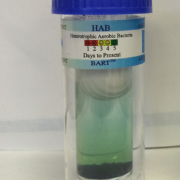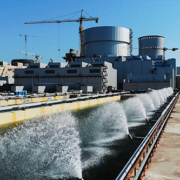How Your Organization could get sued for Testing your water for Legionella Bacteria
Your water treatment service representative – and sometimes your operators – routinely collect samples of cooling water and analyze the bacteria population. So, why is testing for legionella bacteria risky?
Here’s what happened when a water treatment service representative – on his own initiative – collected a sample of the cooling water, tested it for legionella, and reported the positive results to his customer, the owner of the cooling tower
- Internal reporting of results. The facilities manager reported the results to the Environmental Health & Safety Group (EHG).
- Internal publication of positive test results. The EHG manager discussed the issue with his management and decided that it was important to notify the employees about this risk by publishing the information of the positive test result in the cafeteria’s cooling tower in the monthly employee newsletter.
- Suspicion of Legionellosis or Pontiac Fever infection of one employee. Several weeks later, a lawyer and a temporary employee who had been working in the cafeteria requested a meeting with the EHG manager. The temporary employee claimed that legionella bacteria from the cooling tower had caused his respiratory illness.
- Lack of clinical evidence of infection. At the time of the meeting, the temporary employee had recovered from the respiratory infection – making it too late to obtain a clinical confirmation that the infection was caused by the legionella bacteria – much less that the infection was caused by the legionella bacteria from this particular cooling tower.
- Out-of-court financial settlement. The organization agreed to a financial settlement because the organization had not implemented a risk management process for the evaporative cooling tower water systems and could not prove that the cooling tower had not caused the respiratory infection.
What did the organization learn?
- The cooling tower owner must control the chain of custody for collection of water samples and testing for legionella.
- There’s risk for both verified and suspected legionella-related infections.
- The owner of the cooling tower is responsible for managing the communication of testing programs and test results.
- Testing for Legionella bacteria starts with defining the objectives for monitoring.
- Managing the risks starts with a methodical assessment of the building’s water systems – including the cooling tower – as defined in the ASHRAE SPC-188-2018, “Legionellosis Risk Management for Building Water Systems.”
What should the organization do?
Analyzing the risks starts with a quick refresher of the mechanism of Legionellosis infections. There are require three conditions:
- Aerosols (water droplets) infected with Legionella pneumophila bacteria…
- …that are present in an airspace…
- …and breathed into the lungs of a vulnerable person.
If any one of these three conditions are not met, then the risk of a Legionellosis infection dramatically decreases.
Here is an example of the framework to assess the risk of infection:
Control the hazard.
Many experts subscribe to the concept of “control the hazard” by minimizing the presence of legionella bacteria in the cooling water and/or minimizing the generation of water droplets – drift – that leave the cooling tower with the plume of water vapor. This approach will reduce, but not eliminate the risk of infected water droplets.
Define the drift zone.
Minimizing or preventing the drift from being present in an airspace where people are present is difficult, but not impossible. Cooling towers in “good condition” located far from parking lots or areas where people congregate or in a place where the prevailing winds direct the drift away from these populated areas have a low risk. In contrast, cooling towers located in close proximity to pedestrians and/or that have damaged drift eliminators or other structural or operating problems that create high concentrations of drift have a higher risk.
Identifying the presence of vulnerable persons in the drift zone is a nearly-impossible task due to the confidentiality of personal medical information and the complexity of accuracy assessing exposure to Legionella pneumophila-contaminated aerosols in the drift zone.
The less knowledge or control you have over preventing infected water droplets from leaving the cooling tower, defining the drift zone and identifying the presence of at-risk individuals in the drift zone, the greater the risk of an infection.
Managing the risks of Legionellosis infections from your cooling tower does not automatically require testing for Legionella pneumophila bacteria in the cooling water. However, as the risk of infection increases, the more likely that the monitoring program will include routine testing for Legionella pneumophila bacteria.
Are you worried about legionella in your cooling tower? Or in your building’s water systems? We’re here to help. Call us (609-896-4457) or send us an email (huchler@martechsystems.com).
P. S. Don’t forget to subscribe to our blog.







